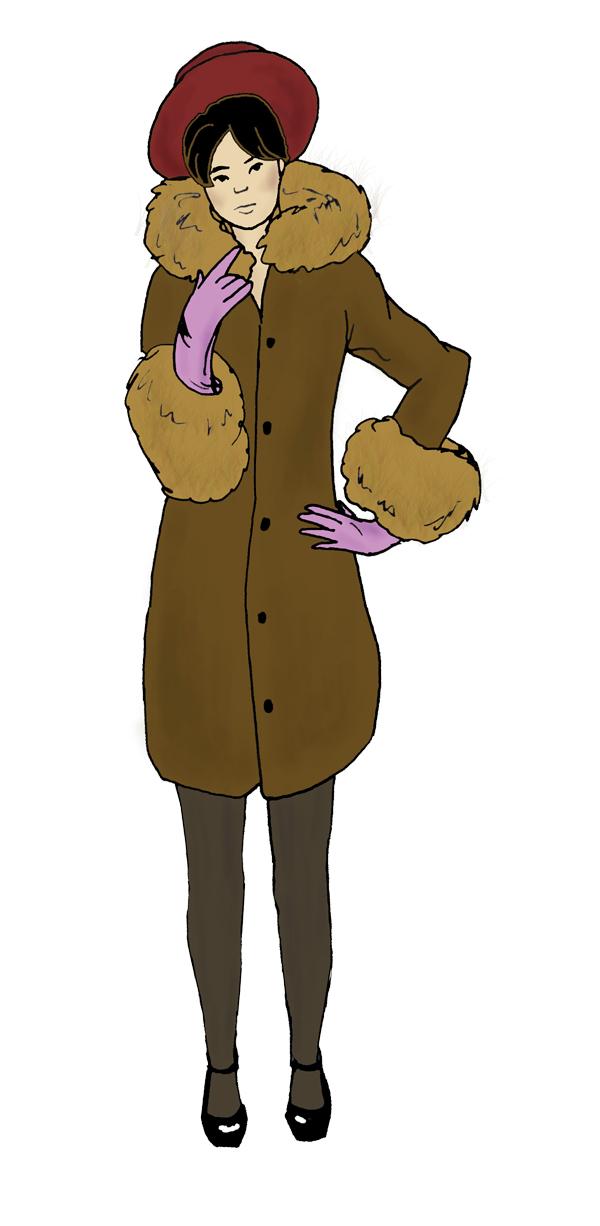Fur has become a popular again in the fashion world yet at the same time it’s a controversial trend.
Ring, ring, ring,” chimes the
bells as I walk through the front door, entering the musty room filled with colorful decades of different fashion. Walking into Empire Vintage Clothing on 443 Waverley St. is like entering into a fashion time machine.
Along with thrift shop standbys like letterman jackets and Beastie Boys shirts, this store (like so many others) has begun selling something more controversial: fur.
This old elitist staple, once ignored for fake fur, is appearing even in the liberal haven of Palo Alto.
The emergence of a previously reviled trend is nothing new. But Google Trends shows that searches for “buy real fur” was virtually none existent until November 2012 when it peaked in Google searches. (Currently the search on Google trends has decreased.)
Recently many notable designers such as Diane von Furstenberg, Alexander Wang and Alturazarra incorporated fur into their 2013 fall fashion line.
Wearefur.com is a website that advocates fur fashion. The “about” page of the website talks about the rise of fur in fashion modern fashion. Fur is not necessarily big in North America yet, but according to this website, 80 percent of the fur exports go to Europe.
“Global fur sales have been steadily rising since the International Fur Trading Federation began to collate figures in 1998. In 2011 total sales turnover was at just over $15 billion,” the website states.
“More adults, college kids usually come in looking for exciting clothes because they are trying to explore and self-identify,” says Orchid Taylor, an employee at Empire.
This 1920s fashion style has even spread to Paly students such as fur enthusiast junior Caroline Moley.
“I wear it for fashion because I think it looks good on with certain pieces. Yes, it also does keep you warm,” Moley says.
Moley began wearing this trend in admiration of her deceased great grandmother, with whom she was very close.
“She always had the nicest things, like Chanel outfits and different fur coats and stoles,” Moley says. “So I inherited items from her and ever since I have loved it.”
At the same time, some Paly students believe this new trend unfairly cruel to animals.
“If fur is used for fashion, [there are] other options such as synthetics and pleather are available,” junior Shyon Lewis says.
Junior Callie Walker also is against the wearing of fur.
“At one point in human history, it might have been necessary to wear fur for warmth or some sort of protection, but with all of the different types of clothing available to buyers today, including faux fur, it just seems downright wasteful of animals’ lives,” Walker says.
Walker has been a vegetarian since she realized at five years old that animals are conscious.
“To me it’s not really a choice. If I even try to eat a piece of meat, not that I do so frequently, I will feel sick to my stomach,” Walker says.“ I just find it really unfair that animals are constantly taken advantage of because they are unable to speak for themselves.”
Moley believes that wearing vintage fur is justified because she says it isn’t harming living animals.
“All of the furs I wear are from my grandma and great grandma or they are vintage, so I guess you could say I’m not supporting new animals to be killed,” Moley says. “People eat meat every day and food only lasts a bit, but a fur coat can last a lifetime.”
Story continues below advertisement



